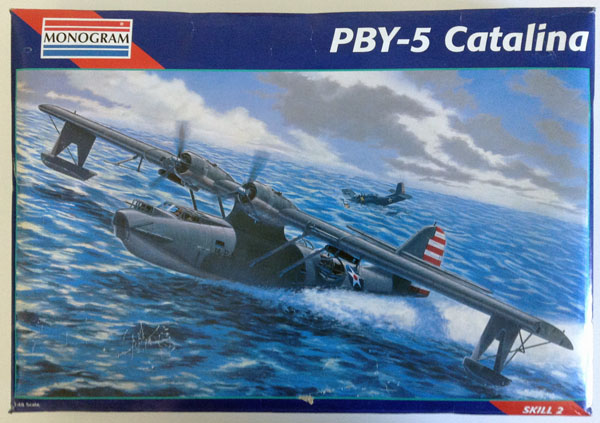
Feature Article by Mick Stephen
A note from Geoff
It’s always good to bring you another Mick S build – always an interesting twist on the subject that I love to see. Here’s a shot of Mick’s completed build and very nice it is to see this model again; I remember my own build of a US Black Cat from the kit when it was first released!
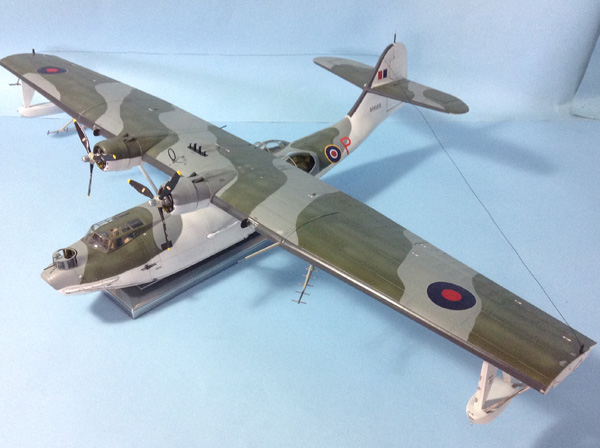
Background
There is plenty history out there on the web about the PBY Catalina in RAF service during WWII, so I see little point in creating pages of background on the type, therefore I will be brief and specific to the subject of this build. I wanted to capture a modest example of an early Coastal command airframe, the first batch for the RAF was 100 airframes purchased directly from Consolidated Aircraft and delivered via ferry flight from late 1940. The last of this batch of 100 was AH569, our chosen subject.
The recipient squadrons of these first RAF specification Mk1 aircraft were No 210 and No 240 Squadrons. Our airframe was allocated to No 210 Sqdn (the Sqdn code DA, but more on that later) based at Oban on the West Coast of Scotland, who converted from Sunderland Mk1’s to Catalina’s in April 1941.
Almost immediately aircraft were detached to where they were needed for long range anti-U-boat patrols, reconnaissance and air-sea rescue duties. The main detached flights were based out of Invergordon on the East Coast and Sullom Voe in Shetland. It wasn’t long before detachments went further afield and the squadron operated aircraft out of the Kola Inlet and Lake Lakhta near Archangel in Russia to support the Arctic PQ convoys. Below is an example of the Mk1, but I don’t intend to use the beaching gear.
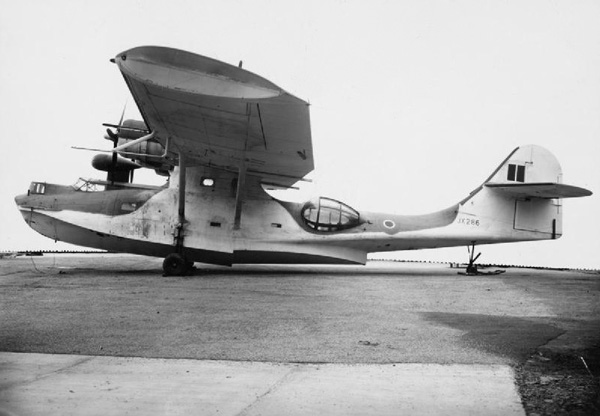
I found reference to AH569 being involved in these long range detachments, but it primarily operated out of Sullom Voe, where she was unfortunately lost in a storm while moored in the bay.
The kit and extras
Monogram’s 1:48 PBY5 kit was first released in 1995, followed by a PBY5A version (the one with undercarriage). The 28-5ME was a true flying boat, requiring ‘beaching gear’ to be towed ashore for maintenance. The later PBY5A were amphibian’s capable of land base use.
For the time the kit is extremely detailed with recessed panel lines and fabric control surface detail. Although not a difficult construction the kit is very large, and the box packed full of plastic.
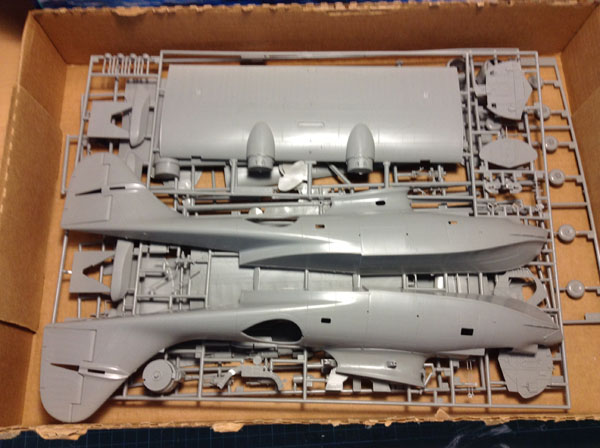
Construction is simplified by separating the preparation and painting of the very large wing and fuselage, then bringing them together at the last.
The kit has one major flaw, a rather out of proportion tail which I will demonstrate exactly what and how to fix later. This needs major corrective surgery and the addition of a resin replacement.
The kit also lacks interior detail, especially in the areas which can be seen. There are some amazing examples of scratch built full interiors out there, but I will restrain myself to only visible areas.
So we need some extra AM parts……….here’s the list I used:
Belcher Bits Corrective Tail BB-05
Eduard Exterior PE set 48182
Eduard Interior PE set FE599
True Details Cockpit resin set 48457
Quickboost Engine resin pair QB48061
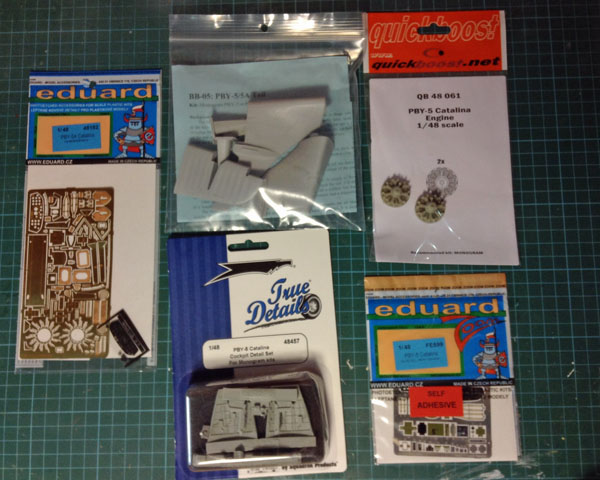
This is a project that has been lurking in my stash for a long time,